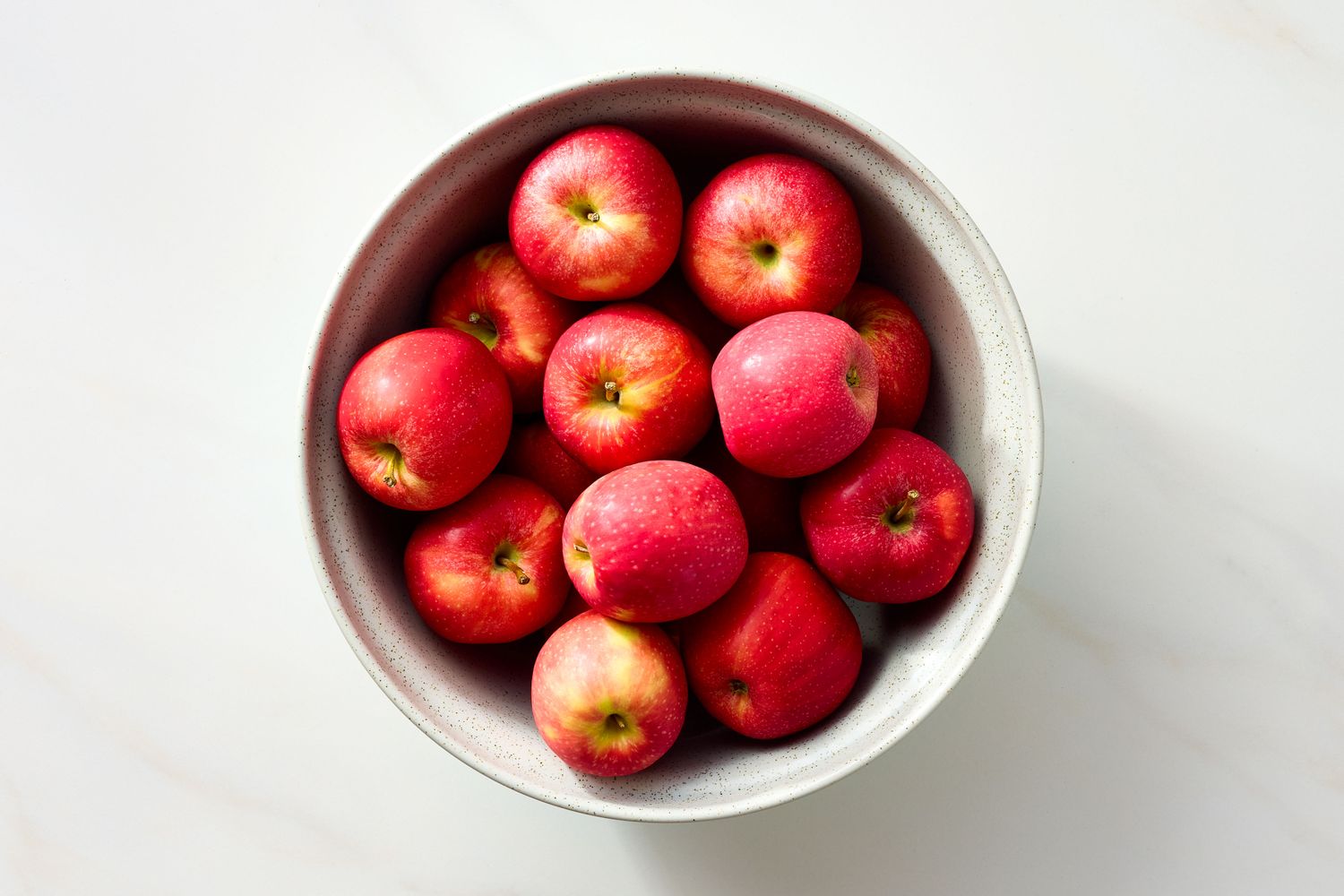Given the intrinsic meaning of the age-old proverb “An apple a day keeps the doctor away,” it’s not much of a leap to assume that the health benefits of apples are a cut above other fruits—or at the very least, well worth seeking out. Just in time for apple season, we connected with dietitians to uncover more about apples’ nutritional benefits and the best ways to enjoy the pick of the crop.
Lauren Manaker, MS, RDN, LD, CLEC, registered dietitian at Nutrition Now Counseling
Desiree Nielsen, RD, host of The Allsorts podcast and author of several cookbooks, including Plant Magic: A Celebration of Plant-Based Cooking for Everyone
Apples 101
Like pears, apples (botanical name, Malus domestica) are classified as pome fruits, meaning they have a core filled with numerous small seeds.
No matter how many apples we’ve devoured, there’s always another cultivar to discover. According to the U.S. Apple Association, over 100 varieties of apples are grown commercially in the United States. The top five best-selling varieties are Gala, Red Delicious, Honeycrisp, Granny Smith, and Fuji. Cosmic Crisp and Pink Lady/Cripps Pink varieties are also gaining popularity among apple lovers.
Super Snack
Sweet or tart, green, red, or yellow, apples effortlessly fill that between-meal gap, whether cut into chunks and enjoyed by the slice, paired with tahini or nut butter, or as part of an elegant cheese plate. “Apples are a fantastic choice for a healthy snack,” says Lauren Manaker, MS, RDN, LD, CLEC, registered dietitian at Nutrition Now Counseling.
The Benefits of Apples
Nutrient-Rich
Considered a superfood, apples are packed with vitamin C, and they also boast vitamin A, Vitamin E, vitamin K, and folate, plus a wealth of minerals, including potassium, magnesium, calcium, iron, copper, and manganese.
Gut-Friendly
“Apples are an important source of dietary fiber, with roughly four grams per medium apple,” says Desiree Nielsen, RD, host of The Allsorts podcast, and author of several cookbooks.
Fiber helps you feel full, Manaker points out. That feeling of satiety can also be a boon for weight management. Fiber also supports digestion, says Manaker. The gel-like pectin in apples acts as a prebiotic, which powers the growth of good bacteria in your gut, and as a soluble fiber, which reduces constipation and can even help relieve diarrhea.
Antioxidants
Apples are also a great source of antioxidant phytochemicals called polyphenols, says Nielsen, noting that there are some slight differences with respect to the types of polyphenols apples contain—but not enough to recommend one over the other.
“For example, red-skinned apples contain a specific type of polyphenol called anthocyanin, while green-skinned apples don’t,” she says. “But that doesn’t mean green-skinned apples are devoid of antioxidant benefits!” She adds that Granny Smiths, for instance, are still rich in the anti-inflammatory polyphenols quercetin and catechins, which are classified as a type of polyphenol called flavanols, or flavan-3-ols.
Gala or Granny Smith, there is no preferred choice. “We actually don’t have a lot of good data comparing the nutritional value of different apple varieties, but what we do have suggests that different apple varieties have very similar amounts of vitamins and minerals,” she says.
Immune Support
These polyphenols have multiple benefits, protecting against oxidative stress and inflammation, and regulating blood sugar levels. “Quercetin is known for its anti-inflammatory and immune-supporting properties,” says Manaker.
Vitamin C, another immunity booster that protects cells from damage caused by free radicals, is also a core antioxidant in this superfood.
Heart and Brain Health
“Flavan-3-ols may support heart health and improve blood flow,” says Manaker. Healthy circulation contributes to improved memory and focus and brain health as well. Apples’ potassium content also benefits cardiovascular function, helping to regulate blood pressure.
Eat the Skin
To obtain the maximum benefits of apples, put away the peeler. “As a dietitian, I’m big on eating apples with their skin, as it’s incredibly nutritious,” says Nielsen. “Much of the insoluble fiber in an apple is in the skin as well as the polyphenol content (which is in the skin, and near the skin),” she says, adding that when you peel an apple, you reduce the fiber content by 25 percent.
But if you’re not a peel person, all’s not lost. “There are still benefits to eating an apple sans skin, so if you remove the skin, don’t think you are just eating empty calories,” says Manaker.
She suggests washing the apple thoroughly to remove any dirt or residue before taking a bite.
Raw vs. Cooked
As much as we adore apples plucked from the tree (or purchased by the bushel or pound, whatever the case may be!) we also love them in pies, crumbles, crisps, muffins, applesauce, and scores of other dishes.
Nutrition-wise, however, raw apples have a leg up. “As with all fruits and vegetables, there are some phytochemicals and vitamins, like vitamin C, that are quite delicate and diminished by cooking,” says Manaker. The same can be said of dehydrated apples. Nielsen agrees, adding, “Cooking can reduce certain heat-sensitive nutrients, like vitamin C, but the fiber and many antioxidants, including quercetin, remain intact.”
Still, these decreases don’t have a major impact on nutritional values, says Nielsen. Removing the skin to cook apples, she says, is a bigger contributor to nutrient loss than the actual cooking.
“No matter how you prepare them, apples are still a nutritious choice,” says Manaker. “And since most Americans are not eating the recommended servings of fruit every day, enjoying apples in many forms is certainly a great idea!”

